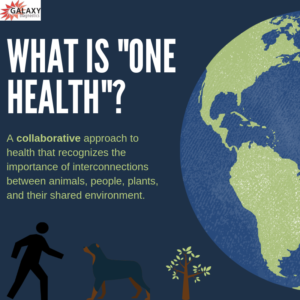The International Conference on Bartonella as Emerging Pathogens is an annual 3-day meeting that provides researchers, physicians and veterinarians with updates on the latest Bartonella research from around the world. This year, 22 countries were represented at the National Veterinary School of Alfort in Paris, France from September 18th to September 20th. Galaxy Diagnostics was a co-sponsor of the event.
As I wrote earlier this year on the 10th anniversary of Galaxy Diagnostics, Bartonella species in North America were unknown when I attended veterinary school in the 1970s. It wasn’t until the 1990s when Bartonella henselae was first isolated from HIV/AIDS patients. I’ve changed my views from thinking that Bartonella species infection was quite rare in humans to thinking that a large number of people are probably exposed at some point in their lives.
Research seems to be bearing this out. Since the early days of Bartonella research, One Health research has revealed more than 40 species of Bartonella that can be found in a variety of vectors, animals, and humans. Furthermore, recently published case studies suggest these species can have profound impacts on the long-term health of their host.
Despite this research, some medical education about bartonellosis is still stuck in the 1990s. At Galaxy Diagnostics, we continue to hear from patients that their bartonellosis was first suspected by the family veterinarian, not the family physician.
Years ago, I thought that all I needed to do was increase information about Bartonella species and the rest would follow. It really illustrates how difficult medical education is – and how huge a field Bartonella species research is – that I and the team I work with at North Carolina State University have published more than 150 manuscripts that delve into Bartonella vectors, transmission, diagnostics, and their medical importance in vulnerable patient groups (see veterinary occupational risk). In addition to this, I have committed myself to the very practical work of co-founding Galaxy Diagnostics to make available the best Bartonella species testing possible.
It is now clear that a lot more needs to be done in all areas of Bartonella species research and bartonellosis treatment. Many of us who built the basis of what we know about Bartonella species back in the 1990s are reaching the ends of our academic careers. While I don’t plan to retire any time soon, I’m heartened to see a whole new generation of researchers across the spectrum of one health specialties leading their own teams and conducting research across a variety of topics. We need more of every kind of research to understand what makes Bartonella tick and how bartonellosis can be treated. Research that may seem esoteric, done in places like bat caves in the far reaches of the globe, may hold an important key to treatment.
The International Bartonella Conference brought together researchers from around the world, some of them young researchers branching off into totally new areas that reflect their own interests and ideas. They are unfortunately in an uphill battle for funding and recognition. Many physicians don’t know that bartonellosis can have long-term health consequences, while most members of the general public don’t even know it exists. The individual diagnostic laboratories that sponsored this event made it possible for people to attend, but even collecting enough money for meals for this conference was difficult. Funding laboratories and field work throughout the world is a whole other issue.
Among the research that was presented, there were many talks on new discoveries in vector ecology along with exciting studies describing pathogenic mechanisms Bartonella species may use within hosts. Dr. Alexander Dichter and other researchers from Germany presented findings that explored the pathogenicity factors of Bartonella bacilliformis. They identified a surface protein that aids in adhesion to endothelial cells and would theoretically aid in invasion of cell membranes. Continuing these studies is important for understanding how Bartonella can infect various cell types.
Dr. Michael Giladi and his team working in Israel found that blood levels of Bartonella henselae were highest in cats in the winter, when flea infestation was lowest. Winter was also the season when the highest level of transmission to people who developed cat scratch disease occurred.
These findings challenge the currently held notion that fleas and their feces are typically needed for Bartonella henselae transmission to humans via cats and suggest the possibility of direct transmission from cat bites. Furthermore, it showcases the ability of Bartonella bacteria to adapt and survive in various microenvironments that they encounter across vector and reservoir species.
Conclusion
These were just two of many excellent presentations and research abstract posters from the meeting. They reflect the international nature of current research in the field of Bartonella. If there is anything I would like to see changed going forward, it would be having even more physician researchers added to those who were in attendance. As valuable as the research that was presented at the International Bartonella Conference is, breaking through the barriers to awareness and increasing research funding is going to take more attention from physicians and human health-focused laboratories.
Dr. Breitschwerdt is co-founder and chief scientific officer of Galaxy Diagnostics.
References
Breitschwerdt, E. B. (2014). Bartonellosis: One Health perspectives for an emerging infectious disease. ILAR Journal, 55(1), 46-58. https://doi.org/10.1093/ilar/ilu015 https://academic.oup.com/ilarjournal/article/55/1/46/846503
Cheslock, M. A., & Embers, M. E. (2019). Human bartonellosis: An underappreciated public health problem? Tropical Medicine and Infectious Disease, 4(2), 69. doi:10.3390/tropicalmed4020069 https://www.researchgate.net/publication/332561606_Human_Bartonellosis_An_Underappreciated_Public_Health_Problem



